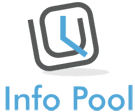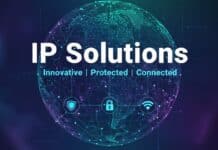Procurement has evolved far beyond spreadsheets and manual approval processes. Today, it stands as one of the most technologically dynamic areas in business management. Digital transformation has given rise to new tools and platforms that optimise workflows, enhance transparency, and drive smarter decision-making. Understanding the technologies that power modern procurement is essential for any organisation seeking efficiency and competitive advantage.
Data-Driven Decision-Making
One of the most significant shifts in procurement technology is the rise of data analytics. Advanced systems collect and analyse large volumes of data from suppliers, contracts, and transactions. This information helps procurement teams identify spending trends, monitor supplier performance, and detect potential risks before they escalate. Predictive analytics, in particular, enables organisations to forecast demand, optimise inventory levels, and negotiate better pricing based on market insights.
Data visualisation dashboards also play a vital role, providing managers with real-time visibility into budgets, supply chains, and compliance. These tools empower decision-makers to act quickly and strategically rather than reactively.
Cloud-Based Platforms for Streamlined Operations
Cloud computing has transformed how businesses handle procurement. Instead of relying on local software installations, companies can now use cloud-based platforms that are accessible from anywhere, ensuring collaboration across departments and geographies.
Solutions like Atamis allow teams to manage supplier relationships, track contracts, and monitor performance through a single, unified platform. Cloud integration ensures updates are automatic, data is secure, and access is scalable to the organisation’s needs. This flexibility is particularly valuable for companies managing multiple suppliers or operating across regions with varied procurement regulations.
Automation and Artificial Intelligence
Automation is at the heart of efficient procurement. Routine tasks such as purchase order creation, invoice matching, and supplier onboarding can now be automated, freeing teams to focus on strategic initiatives. AI-powered tools further enhance this process by learning from patterns and continuously improving efficiency.
Machine learning algorithms can flag anomalies in invoices, predict supplier delays, and even recommend alternative sourcing options based on performance metrics. Natural language processing (NLP) also helps systems interpret and analyse unstructured data from documents or communications, streamlining contract reviews and negotiations.
Integration with Financial and ERP Systems
Modern procurement technology doesn’t work in isolation. Integration with Enterprise Resource Planning (ERP) and financial systems ensures seamless data flow across departments. This connectivity eliminates duplication of effort and minimises human error by automatically updating financial records, budget forecasts, and supplier performance reports.
Such integration also strengthens compliance and audit readiness. Procurement leaders can easily generate reports that demonstrate transparency, cost control, and adherence to internal and external policies.
Enhanced Security and Risk Management
With the increasing digitisation of procurement, security has become a top priority. Modern platforms employ encryption, multi-factor authentication, and audit trails to safeguard sensitive data. Cybersecurity features help organisations mitigate risks associated with supplier fraud, data breaches, or compliance violations.
In addition, AI-driven risk management tools assess supplier reliability using real-time data feeds, such as financial stability scores and geopolitical factors. This proactive approach enables companies to make informed sourcing decisions and build resilience in their supply chains.
Sustainability and Ethical Procurement
Technology is also reshaping procurement from an ethical and environmental standpoint. Many modern systems include sustainability tracking features, allowing organisations to evaluate suppliers based on their environmental and social practices. By aligning procurement with sustainability goals, companies can make a positive impact while maintaining operational efficiency.
Digital tools make it easier to measure carbon footprints, ensure compliance with labour laws, and verify ethical sourcing credentials. These insights are increasingly crucial for businesses under pressure to meet corporate social responsibility (CSR) and environmental, social, and governance (ESG) standards.
The Future of Procurement Technology
As digital transformation continues, procurement will become even more intelligent and interconnected. Emerging technologies such as blockchain are poised to enhance transparency by creating immutable records of every transaction. Internet of Things (IoT) devices could soon track goods throughout their lifecycle, providing unprecedented visibility across supply chains.
Procurement teams will likely rely more heavily on AI for supplier selection, contract management, and risk mitigation. The future lies in adaptive systems that learn, evolve, and collaborate with human professionals to achieve continuous improvement.






